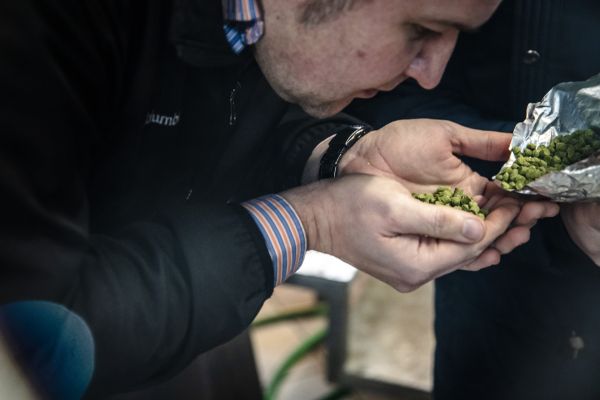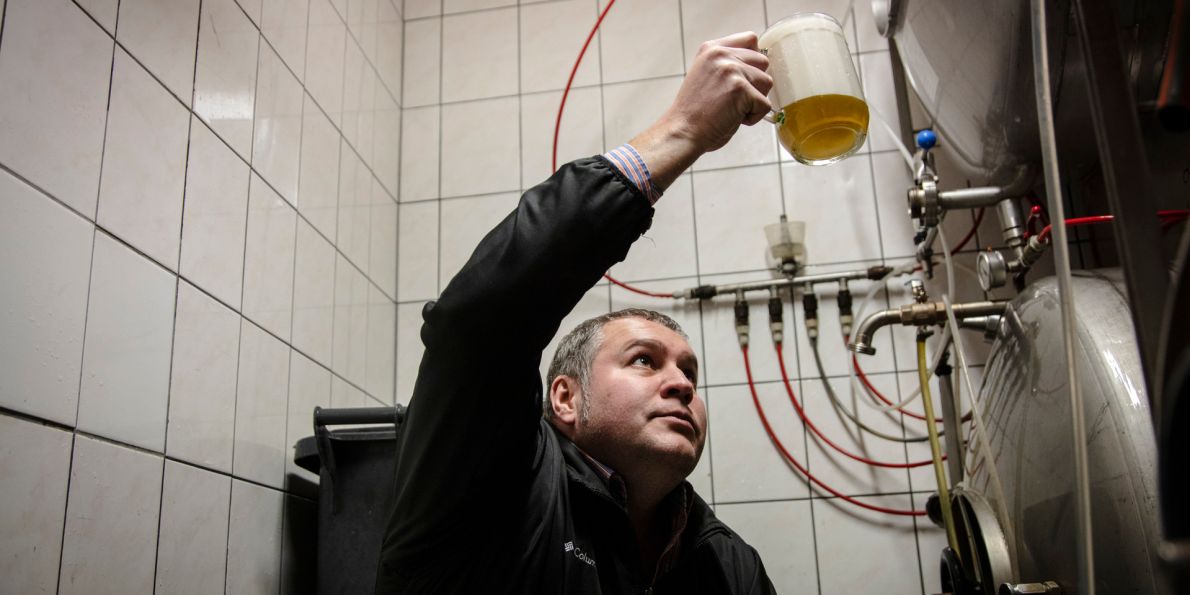As the demand for brewmasters continues to grow, there is already a shortage. Tomáš Gregor, from the Faculty of AgriSciences of Mendel University in Brno, is aiming to share his knowledge with students and inspire and motivate them to work in breweries.
The 42-year-old brewing expert has trained dozens of brewmasters for both large and small breweries and still works with a number of them as their technical supervisor. He describes the current situation in the Czech beer industry as the “golden era” with many different beer styles and types. “The number of microbreweries is also growing, which is only natural – eventually, there could be as many as 2,000 around the country,” he says in an interview with the Universitas magazine.
Winemaking is a well-established craft at Mendel University, but when did you start brewing beer?
Our university brewery at the Faculty of AgriSciences has been working at full capacity since 2013, so it cannot compare to the long history of viniculture and winemaking at the university. However, we have already trained a number of successful brewmasters. The capacity of our brewery is only 100 litres, which is certainly no large-scale production. We use it for teaching, research, and testing new methods, which can then be put to good use in other breweries if they work out well.
Nevertheless, you are still planning a special edition of university beer for this year?
It is a relatively little-known fact that we have produced a number of successful brewmasters and since the university is celebrating its 100th anniversary this year, it presents a good marketing opportunity. We have been creating recipes for the anniversary and working with other brewers around the country. One of these is Petr Kobzík, a graduate from our faculty who runs one of the oldest microbreweries in Southern Moravia in Brno-Žebětín. We have been working together to make four types of beer that represent the research conducted at the university and the Faculty of AgriSciences, including “Ležák 1919”. After the First World War, there was a general lack of resources and breweries had to cope with the difficult economic situation. As they could not get enough quality ingredients, they had to use various substitutes. We used a combination of barley, wheat, and rye malts and produced a beer with medium bitterness and a sharp and full body. It has always been a challenge for brewmasters to make high-quality beer when there is a lack of quality ingredients.
What next? Are you planning to combine university beer with your research?
“Ležák 2019” will be launched first. The next type of beer will follow in spring under the name “Gregorův speciál”. This will be quite a strong dark beer and will be unique in that we will use malt made from Nudimelanocrithon, a variety of naked spring black barley, which has never been used for malting before. We are expecting the beer to be full-bodied with a malty flavour and a slightly grassy taste and we are using a lower level of hopping to accentuate these characteristics. This strong beer is tied to the agricultural research of the Faculty of AgriSciences since the barley that we will use was grown on our university farm in Žabčice. The third beer, “Mendelovo nealkoholické pivo”, will be produced under the auspices of Pavel Ryant, the dean of the Faculty of AgriSciences, and aims to showcase the work and research of our students. To make this alcohol-free beer, we used the findings from our graduate’s theses and applied them to create new technological methods based on rye and barley caramel malts. The last beer will be a “students’ special” produced solely by students, who will plan the methods, ingredients, fermentation methods, and design.

As the head of the Department of Food Technology, can you say whether this is an attractive area of study for students? Have there been any changes in recent years?
It is a very popular discipline. While we are now seeing a decline compared to previous years, this is a general trend in all programmes and universities. We have about sixty undergraduate students and around twenty-five students in each master’s programme.
And what about your other study programmes?
Food sciences are generally an attractive area for students since food is something that people will always need. There is a focus on the production of safe food, which requires mastering the technologies used, and all of this is related to a healthy diet. The programmes offered at the MENDELU Faculty of AgriSciences tick all these boxes, as is evidenced by the continued interest of students.
The number of microbreweries in the Czech Republic has been on the rise, so much so that it is difficult to count how many there are – certainly over 50 in Southern Moravia and over 400 in the whole country. Can you give an estimate of how high the number can go and what makes microbreweries so popular?
In general, any municipality with around 5,000 people can sustain a craft brewery. The number could grow up to 2,000 in the whole country. Those that won’t find enough customers, perhaps due to a less advantageous location, will close down, but new ones will open elsewhere. It is a natural cycle.
When the first Pegas microbrewery opened in Brno in 1992, it was a big event. Many consumers were worried that the cloudy unfiltered beer was spoilt. Are people better informed today? And what is the main deciding factor: is it still price, or is that less important to the new generation of consumers?
Price certainly plays an important role and is generally higher for craft beer even if it is regular draft beer or lager, with “special” beers – which are stronger than regular beers – costing between 70 and 100 crowns for a half-litre glass. If you want craft beer, you simply have to pay that little bit extra. As regards your other question, consumers are well informed today and slightly cloudy unfiltered beer does not put anyone off.
Despite an upsurge in microbreweries, the number of large brewers remains more or less constant. How are they responding to the current market situation?
Some of the large breweries are coming up with special beers to add a bit of zest to their offering, others have been playing the tried-and-tested game of sponsoring pubs that offer their beer by providing sunshades, tablecloths, signboards, and so on.
You recently defended your habilitation thesis, what topic did you focus on?
My research mostly focused on malting and brewing, including the use of alternative ingredients such as pseudocereals – buckwheat, sorghum, quinoa, and amaranth. These grains were malted and used to make beer, which was then subject to chemical and physical analysis and sensory evaluation. Many of the research findings find practical application in the evaluation of these alternative grains and in the sensory values of untraditional beers.
The author is the spokesperson for Mendel University in Brno. His long-term interests include the history of brewing and he is a contributor to the magazine Kvasný průmysl. He has also published several monographs on the history of breweries.
